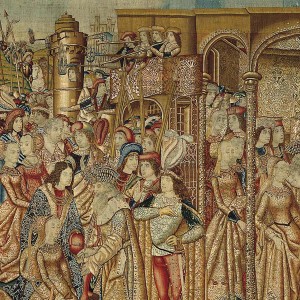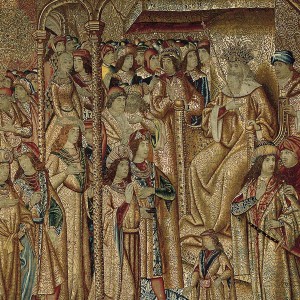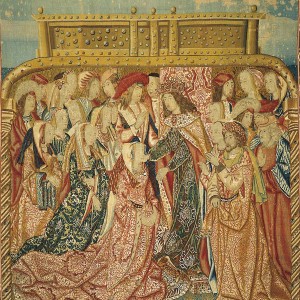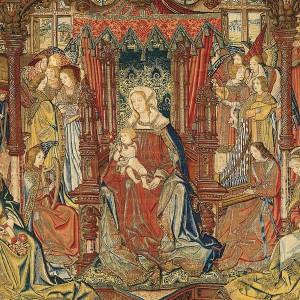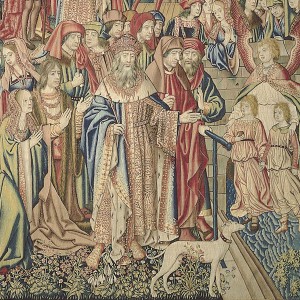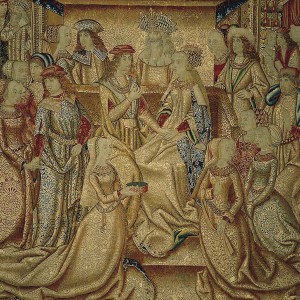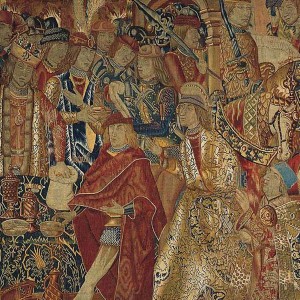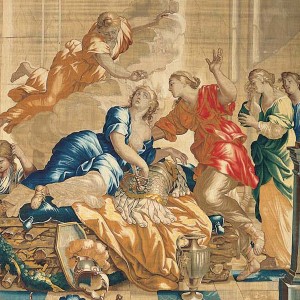Tapestries in the Norton Simon Museum
The art of tapestry — an ornamental textile woven of wool and silk threads that often tells a story — flourished in Europe from the 15th through the 18th centuries. Often called “the frescoes of the North,” tapestries were synonymous with the brilliant costumes, courtly occupations and spiritual character of the Middle Ages and the early Renaissance. Flemish, and later French, weavers excelled in creating imaginative and sumptuous pictorial designs. The Norton Simon Museum is home to eight spectacular examples, from the 15th through 17th centuries. Their subject matter includes episodes from ancient myth and history, as well as religious imagery, all of which were popular subjects in this medium.
The story of the Trojan War, beloved by medieval writers, provided rich source material for this art form. The adventures pertaining to Paris and Helen from this famous epic tale inspired the design of four of the museum’s tapestries. Woven in Belgium, a center of artistic activity, including tapestry production, the suite likely included additional scenes that may have been displayed together as one continuous, decorative ensemble.
SHOW MORE
